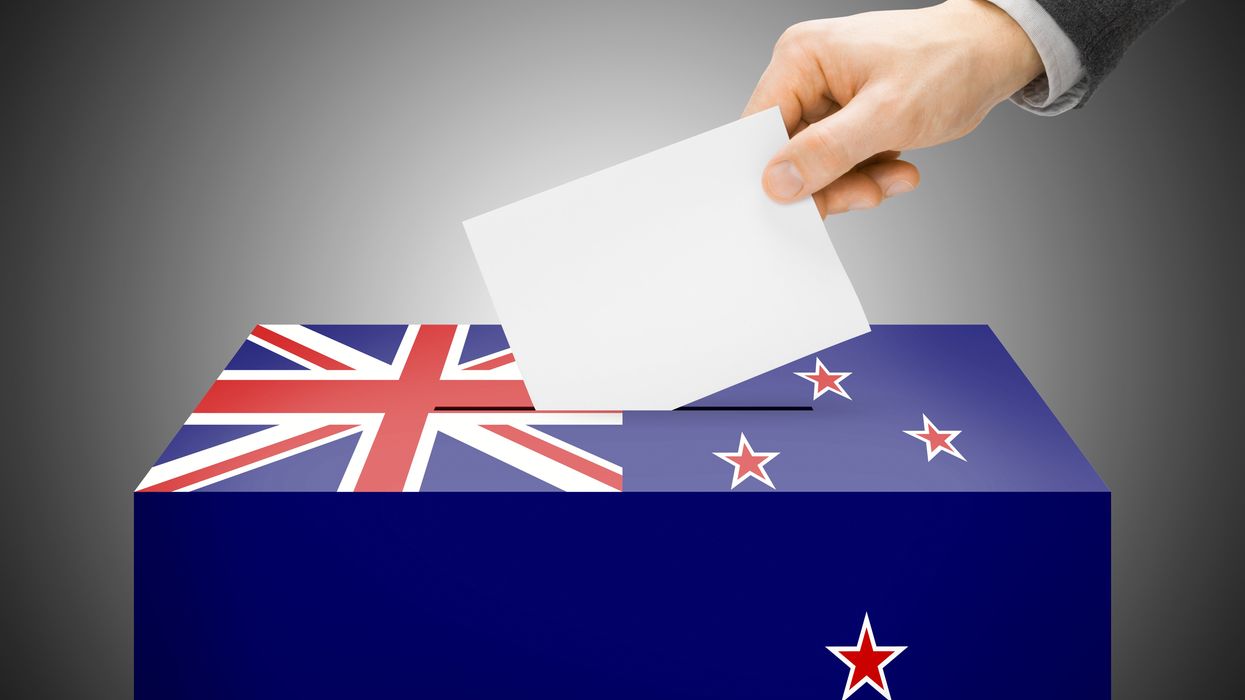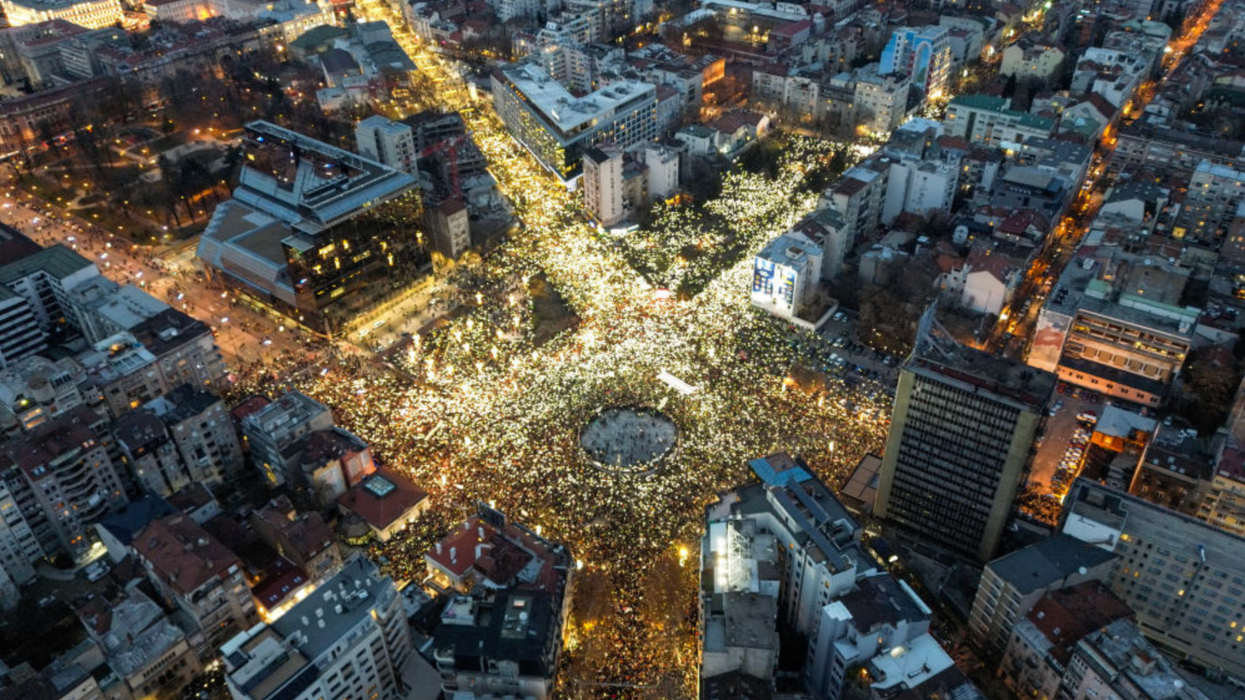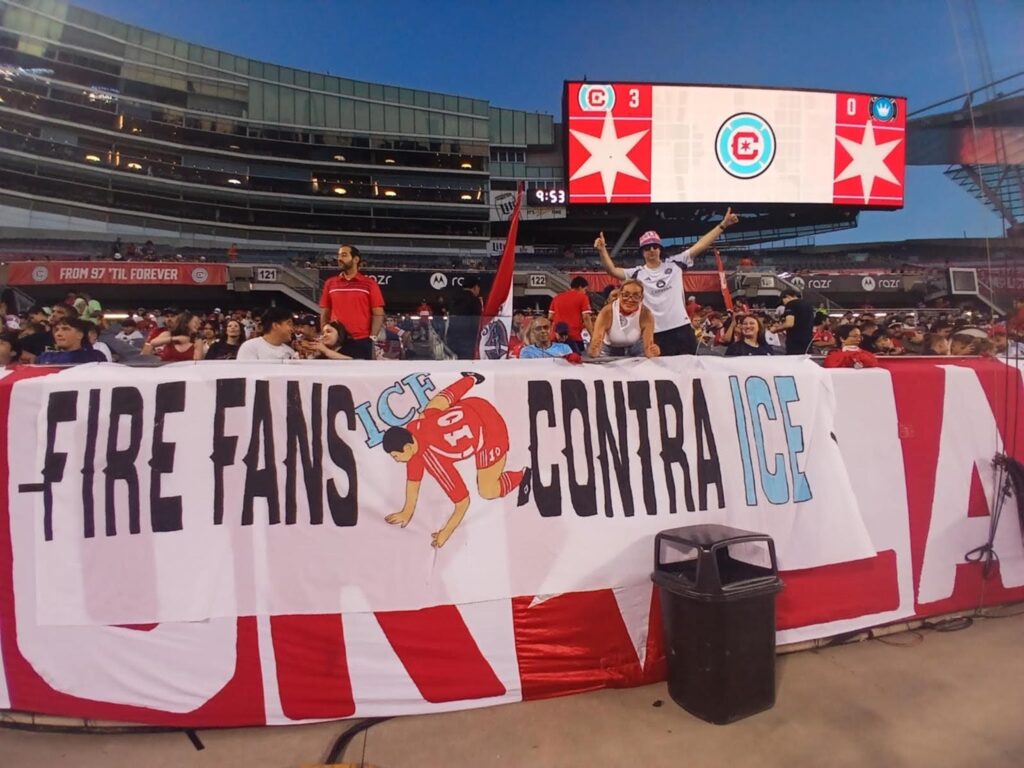Terrell is executive director of RepresentWomen. Richie led FairVote for 31 years and now serves as a senior advisor.
2023 has been a big year of 30th anniversaries for us. In 1993 we were married. FairVote, the organization we helped found, moved into its first office – that is, a bedroom in our D.C. group house. FairVote earned its first sustained attention in the national press when Lani Guinier’s nomination to head the Department of Justice’s Civil Rights Division triggered a national conversation about the proportional representation voting systems that she had proposed in a brilliant series of law review articles.
This year also marks the 30th anniversary of a remarkable electoral reform triumph in New Zealand. In 1993, a citizen-led reform coalition pulled off a heroic upset in a referendum that replaced American-style winner-take-all elections with a “mixed member proportional” system. We had a front row seat, as our leadership in America’s nascent proportional representation movement earned us an invitation to support the campaign with events, strategy sessions and media interviews across the nation.
We wanted to mark this milestone with our reflections about what it takes to win such a transformative national change – and how best to translate those lessons into the very different world of politics of the United States. In this article, the first in a two-part series, we’ll zero in on the New Zealand half of the story.
Importantly for those skeptical that a proportional system can be implemented in the United States, New Zealand was seemingly an impossible place to win reform. It was the world’s most quintessentially winner-take-all democracy – one with just a single national chamber of 99 legislators, elected through “first past the post” voting in single-member districts. Minor parties couldn’t get traction, and the people lacked a citizen initiative. The major party winning the most seats earned absolute power and typically would have little incentive to change the electoral rules. Even so, New Zealand changed to a fully proportional system in 1993. We’ll summarize the fortuitous string of events that made reform possible:
- Several close elections, combined with strong third parties, triggered controversial distortions in the share of votes cast for parties compared to seats won – including a “wrong-way outcome” where a party with fewer national votes gained control of government. That controversy led the Labor Party to promise to set up a commission to examine electoral system reforms. After it took office, it turned the job over to Geoffery Palmer, a cabinet minister who took his job seriously. The result was the 1985-86 Royal Commission on the Electoral System.
- The commission earned great respect for its thorough, open-minded approach to analyzing options and ultimately recommended a change to a mixed-member proportional (MMP) voting system – in which half the seats are elected through U.S.-style single-member districts and half come from “party lists” that are added to provide overall proportional representation (matching share of votes earned to share of seats earned). Forms of MMP are now widely used around the world, but at the time MMP was only used in Germany, where, under American occupation after World War II, it had been adopted as a compromise between the district system familiar to Americans and the party list system familiar to Germans.
- The commission’s report might have ended up as a thoughtful, but dusty, read in university libraries. Instead, Labor Prime Minister David Lange in the 1987 elections misread his campaign debate prep notes and mistakenly promised a referendum on its MMP recommendation. After his re-election, his government ignored that promise.
- The National Party in its successful 1990 campaign seized on this broken promise and committed to hold a referendum. Because it was not supportive of change, however, the National government established a challenging multi-year process designed to kill or at least weaken reform efforts. It held a national two-question referendum in 1992 where New Zealanders first voted on whether to change the system at all and then on which of five election methods to pick for a head-to-head referendum in 1993 against the existing system.
- Fortunately, a brilliant group of proportional representation advocates came together and made a series of savvy tactical campaign moves. Central to its strategy was staying unified in backing the commission recommendation for MMP and messaging the case for change exceptionally well – such that a stunning 85 percent of New Zealanders in 1992 voted for change and 70 percent voted for MMP.
- Given that status quo defenders had a huge campaign spending edge in the 1993 “runoff referendum” – estimated to be greater than 10 to 1 – those conditions still might not have been enough. Fortunately, the government paid for a major education campaign where the nation’s excellent political science community created a neutral baseline foundation of accurate information – one that helped weaken the impact of the slew of opposition ads seeking to demonize MMP. And voters were unusually ready for change because both major parties in the 1980s had acted to open up the nation’s historically closed economy over the objections of most of their voters. While ultimately a likely positive for the country, it disrupted many people’s jobs and triggered deep voter dissatisfaction. When the votes were counted, 54 percent voted for change, including an astounding 92 percent of young voters.
- Critically for the long-term preservation of MMP, a provision in the legislation triggered an automatic review and a second referendum to retain the system, but only after nearly two decades of use that gave the country time to settle into its new rules and for both major parties to experience winning under the new system. In 2011, voters comfortably retained MMP, and it is now essentially settled law.
While no system is perfect, MMP indeed has worked well:
- Voter turnout has been sustained at high and remarkably equitable levels across age groups, including 82 percent turnout in 2020. International evaluators of governance consistently rank New Zealand high, such as Transparency International ranking the nation second in the world in 2022 for its exceptionally low levels of government corruption.
- Major parties are held accountable, and neither party is favored by the rules. With the National Party victory in this fall’s election, putting conservatives in power until 2026, the major parties on the left and right will each have had 15 years running the country since the first MMP election in 1996. Minor parties also consistently earn their fair share of seats, and at least one minor party nearly always has been a formal member of the governing coalition – including the Libertarian-like ACT party and the New Zealand First party in the upcoming National-led government.
Women and indigenous New Zealanders are much more accurately represented. Two women prime ministers (Helen Clark and Jacinda Ardern) have led the Labor party to four victories, and by 2022 women held more than half of all seats in parliament. New Zealand’s Maori people have also earned far fairer representation than in the winner-take-all era – rising from 8 percent of Parliament in 1993 to 14 percent after the first MMP election in 1996 to more than 20 percent by the 2020s.
Proportional representation is now widely accepted and has spread within New Zealand. The proportional form of ranked-choice voting (also called the “single transferable vote”) is used by all voters in health board elections and in many elections for mayor and city council, including in the capital city of Wellington.
So what did we learn from our time there and what lessons did we bring to our work in the United States?
Our personal experience was life-changing and reinforced our youthful exuberance that national change was possible. During our whirlwind tour of the South and North islands, we talked with journalists in every city and stayed in a new reformer’s home nearly every night, which allowed us to experience directly how a full political spectrum can rally around electoral reform, from left to middle to right. MMP campaign leaders like the late Rod Donald and Wellington’s Phil Saxby were brilliant at finding ways to make reform relevant to ordinary New Zealanders. Visits to restaurants and barber shops (yes, Rob had hair in 1993) would result in lively conversations with New Zealanders about their views on different voting methods.
Seeing how MMP could win on the ballot helped prepare us to support the string of ballot measure wins for better election systems in the United States – primarily ranked-choice voting. The fact that FairVote today has a staff of more than 30 people and annual budgets topping $7 million, and the fact that its spinoff RepresentWomen has achieved remarkable impact since its founding in 2018 have their origins in the hope and determination inspired by New Zealanders.
At the same time, we quickly learned to adapt to the reality that the insularity of most Americans and their elected leaders made international uses of proportional representation and RCV and successes like New Zealand’s win far less relevant for media and reform wins than ones that we can translate to our unique set of political circumstances. In the year after the referendum, our enthusiastic outreach about New Zealand’s win for MMP earned almost no traction. Yet a county’s discussion of lesser proportional models like cumulative voting could land us on the front page of The Washington Post, while our analyses about problems with non-majority outcomes in presidential elections and congressional landslides could earn prime spots on CSPAN and national oped pages.
In our next article, we’ll talk about how we have translated the aspirational goals of the New Zealand movement to embracing our challenge in the United States: to identify a path to national, state and local reform that can win and address our nation’s unique set of institutions, conditions and challenges. For us, that has meant being catalysts for the current drive to use ranked-choice voting for all of our elections and its proportional form for elections with multi-winner districts.
Before turning to our next article, we doff our hats to New Zealanders. MMP hasn’t favored one side of the partisan spectrum, perhaps disappointing American partisans who only support reform when it helps their side. Nor has MMP meant that every government does everything well. But it has indisputably helped the nation achieve effective governance, strengthen its core democratic foundations, and set a model for transformative change that remains an inspiration to reformers everywhere.





















